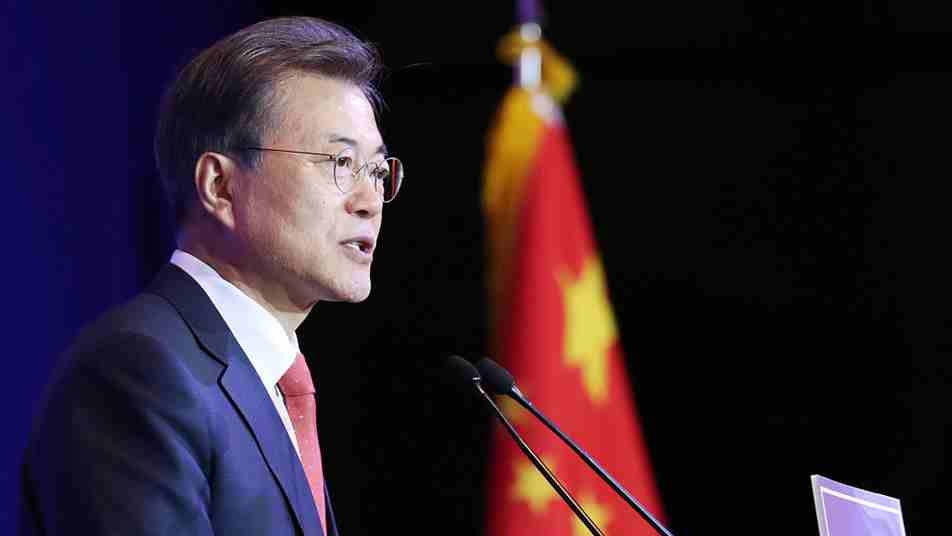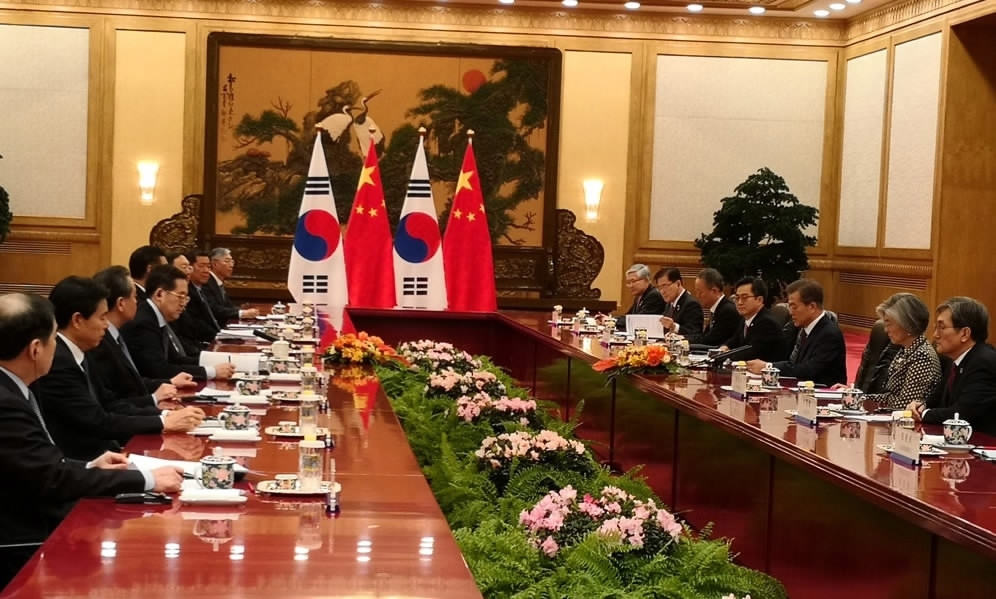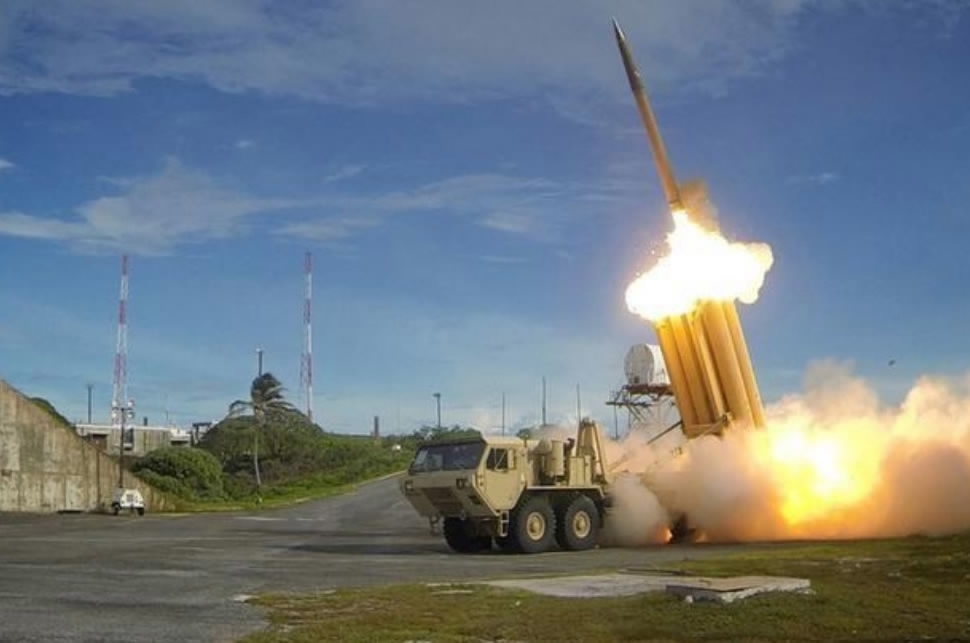
Opinions
22:08, 14-Dec-2017
Opinion: Moon Jae-in's visit to China: a journey of expectations and hope
Guest commentary by Wang Peng

South Korean President Moon Jae-in is on a state visit to China for the first time since taking office in May this year.
The international media generally believe that after a two-year frozen period of China-South Korea relations largely due to the deployment of the THAAD System, Moon’s visit to China will boost the relationship between Beijing and Seoul by rebuilding the deteriorated mutual trust in security and developing both bilateral and regional cooperation in economy. In this regard, the author is cautiously optimistic about the success of Moon’s visit.

Chinese President Xi Jinping and South Korean President Moon Jae-in hold talks at the Great Hall of the People in Beijing, December 14, 2017. /CGTN Photo
Chinese President Xi Jinping and South Korean President Moon Jae-in hold talks at the Great Hall of the People in Beijing, December 14, 2017. /CGTN Photo
The issue of THAAD is a vital disease of China-South Korea relations. Although two countries promised to make every effort to improve their relations, it is hard to bypass THAAD indeed. At present, they still hold sharp contradictions on this issue. Both sides just agree to publish a joint press communique after the summit, rather than issue a joint statement. China would be happy to add the “three-no promise” into the statement, namely, no additional deployment of THAAD, no participation in the US missile defense system, no participation in the US-Japan-South Korea trilateral alliance. However, Cheong Wa-dae rejected Beijing’s requirements clearly. Therefore, the two heads will neither make a joint statement nor see the reporters after the meeting.
In addition to THAAD, the DPRK nuclear issue is another unavoidable problem. In contrary to THAAD, China and South Korea may have more common language on this issue. So hopefully, the two countries may continue to reiterate their traditional stance of “denuclearizing the Korean Peninsula”, which is also the greatest common interest of the five parties – China, South Korea, US, Russia, and Japan.

A Terminal High Altitude Area Defense (THAAD) interceptor is launched during a successful intercept test. /Reuters Photo
A Terminal High Altitude Area Defense (THAAD) interceptor is launched during a successful intercept test. /Reuters Photo
In addition, China and South Korea also have common positions that are worth communicating in reaffirming their position of maintaining peace of the peninsula and preventing potential war, chaos and humanitarian disaster. After Moon took office, he repeatedly stated on different occasions that South Korea firmly opposes the imprudent use of force by the US military. As a common neighbor of both South Korea and DPRK, China is equally concerned about the peace on the peninsula and shared a similar policy of peacekeeping with Moon.
At the same time, we also noticed that Moon tried to strengthen mutual trust between China and South Korea by underlining their common history and hatred against Japanese militarism. It is wise for Moon to choose December 13, the Chinese National Memorial Day of Nanjing Massacre, to visit China and hence awakening the common feelings and historical memories of the two countries. Sometimes Japanese reporters complained with a jealous: ‘it is the common hatred against Japan enhances the friendship between China and South Korea. That is true, though partially.
Another highlight of Moon’s visit to China is Chongqing. For South Koreans, Chongqing means much more than a city in western China. In fact, it located the headquarter of (South) Korean government-in-exile during World War II, in which Moon’s predecessors organized Korean people’s sacred war against Japanese invaders and laid the foundation of modern South Korea.
A century has passed. Today, Chongqing is not only a testimony of history to South Korea, but also offers unlimited opportunities for economic cooperation in the future. As South Korean media reported, Chongqing is one of the four major municipalities in China, as well as a national center of the Belt and Road Initiative. It enjoyed a stable and rapid development during the past five years. Many giant corporations of South Korea, such as Hyosung SK Hynix, have set up factories in Chongqing in recent years. Therefore, Moon’s visit to Chongqing also conveyed a strong signal of strengthening economic cooperation between the two countries.
In conclusion, as the first South Korean president visiting Chongqing, Moon has won the common nationalistic sentiments of both Chinese and South Korean people about their shared memory of the War, successfully returned to the revolutionary shrines for South Koreans to enhance the orthodoxy and legitimacy of Seoul Regime, and also demonstrated his strong willing to promote Sino-ROK economy cooperation in the future. Therefore, it is safe to say that his visit is a "hitting three birds with one stone" success.
(Wang Peng is a research fellow at the Charhar Institute and China Institute of Fudan University, Shanghai. His areas of research include CPC building, Chinese foreign policy and Asia-Pacific international security. His research interests now focus on comprehensive strategic interactions between China and its neighbors, as well as the influence of the Belt and Road Initiative. The article reflects the author’s opinion, and not necessarily the views of CGTN.)

SITEMAP
Copyright © 2018 CGTN. Beijing ICP prepared NO.16065310-3
Copyright © 2018 CGTN. Beijing ICP prepared NO.16065310-3